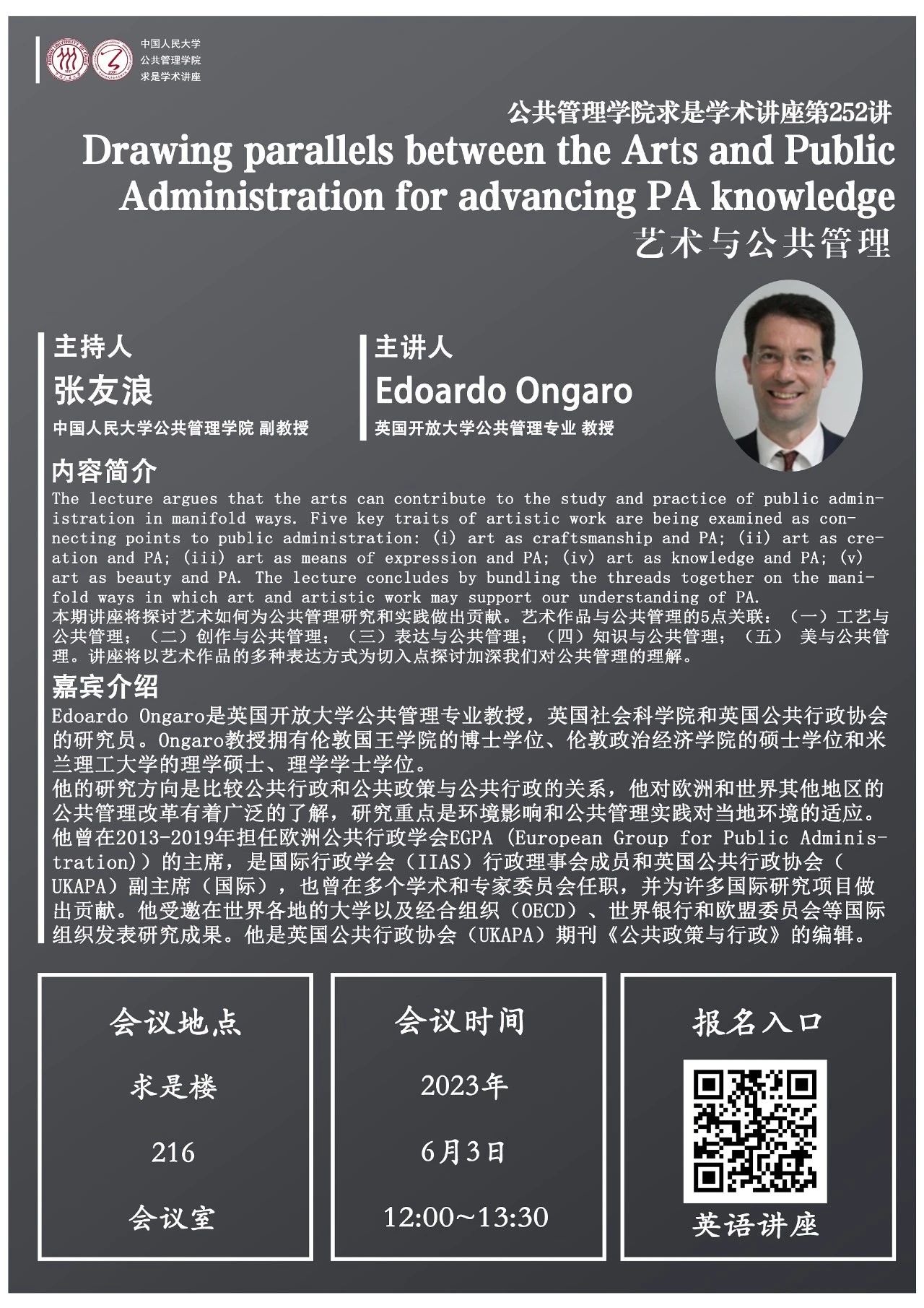At noon on June 3, 2024, the 252nd Qiushi Academic Lecture was successfully held in the Qiushi Building's Conference Room 216 at Renmin University of China (RUC). Professor Edoardo Ongaro from the Open University of the United Kingdom delivered a lecture titled "Drawing parallels between the Arts and Public Administration for advancing PA knowledge."

The event was presided over by Zhang Youlang, Associate Professor in the School of Public Administration and Policy of RUC, and was attended by numerous faculty and students from within and outside the university.
Professor Ongaro has previously held the position of Chairman of the European Group for Public Administration (EGPA), and has served on the Administrative Council of the International Institute of Administrative Sciences (IIAS) and as Vice Chairman (International) of the UK Association for Public Administration (UKAPA). He has expertise in public administration reforms across Europe and other parts of the world, with a research focus on comparative public administration, the impact of the environment on public management practices, and the adaptation of public policy to local environments.
The lecture by Professor Ongaro centered on the various ways in which art can contribute to the study and practice of public administration. He posited that the humanities and social sciences represent two complementary perspectives in public administration research and practice, and additionally taking art into account could enrich public administration with a broader perspective and more knowledge.
In his lecture, Professor Ongaro discussed three interrelated themes: the essence of what art is, the five key characteristics of artistic works, and the critical examination of public administration from an artistic perspective.
In the first part, Professor Ongaro delineated the term "art" in its singular form to refer to the essence of aesthetics, involving the ability and action of "making" and "creating," while the plural form "arts" refers to the seven arts, including visual, performing, and literary arts. He emphasized that both "art" and "arts" focus on the human experience of beauty.
Then, Professor Ongaro identified five key characteristics of art: art as craftsmanship, creation, a means of expression, knowledge, and beauty. He elaborated on art's different forms and attributes, noting that public administration, as a form of human action and work, can also be interpreted as an artistic way of doing things, encompassing key elements of art.
Then, Professor Ongaro identified five key characteristics of art: art as craftsmanship, creation, a means of expression, knowledge, and beauty. He elaborated on art's different forms and attributes, noting that public administration, as a form of human action and work, can also be interpreted as an artistic way of doing things, encompassing key elements of art.
“Comparing art with public administration allows for a critical re-examination of the field and a better understanding of how administrative systems evolve and public services are delivered.” In the final part, Professor Ongaro called for a revisit to the public administration from an artistic perspective.

The engaging lecture sparked lively discussions. In conversations with students, Professor Ongaro shared his understanding of the advantages of integrating art in public administration research, potential research methods, and the prospects of AI in public administration. The lecture concluded in a warm and enthusiastic atmosphere.



